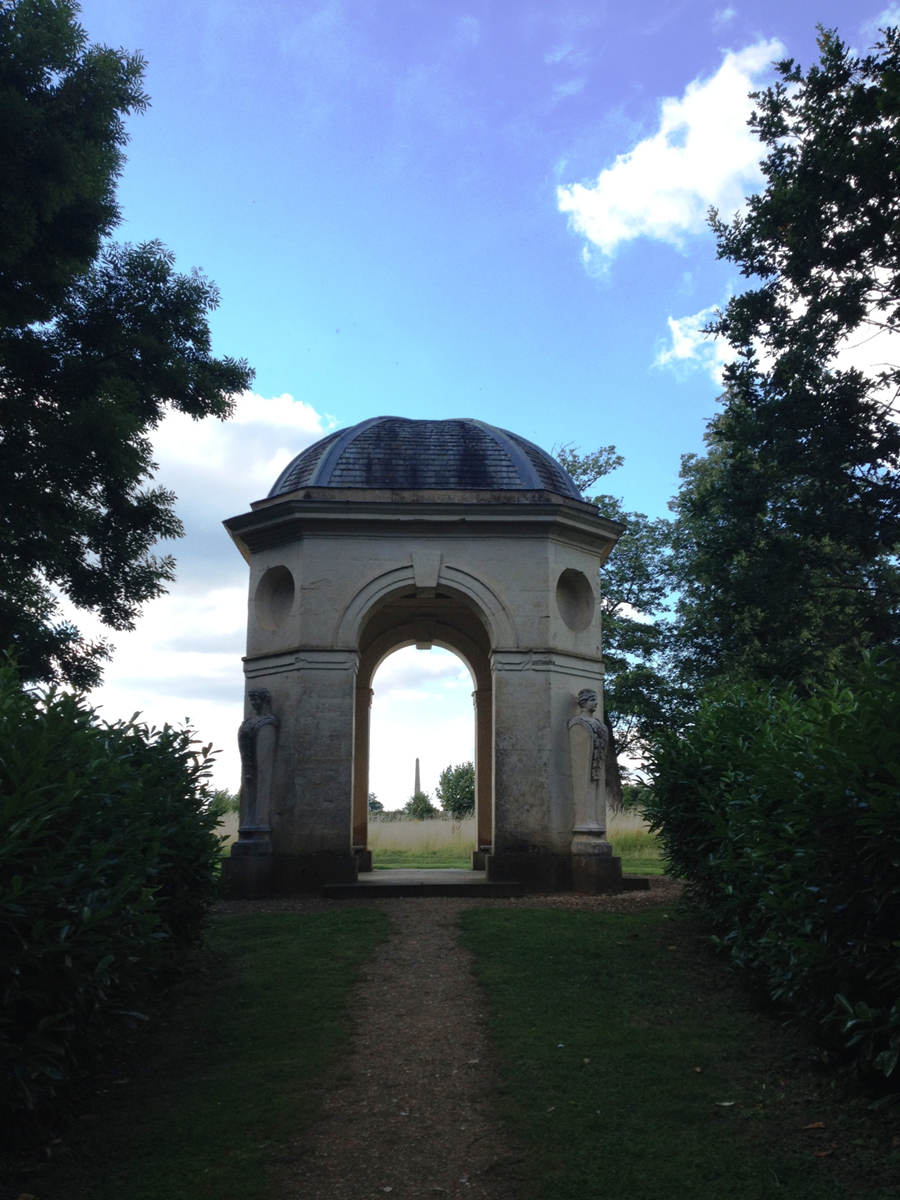Restoration Intern Princes, Patriots, Bards and Sages of Stowe
11 August 2015

The Fane of Pastoral Poetry was initially named Gibb’s Building (named after its architect) and placed on the border between Warden Hill Walk and the Home Park, where Queen Caroline’s Monument now stands. It was then moved to its present position in the north-east corner of the garden, where it resides in the Grecian Valley. However, coherence was sustained by the circle of poetic and inspiration that has always surrounded it.
Around thy building, Gibbs, a sacred Band
Of Princes, Patriots, Bards and Sages stand. -Gilbert West, 1731
Originally, from the late 1720s to the early ‘30s, it was surrounded by half of the busts that now inhabit the Temple of British Worthies, and it was thus also known as the Temple of Worthies. In 1764, in its new spot, a statue of the Muse of Pastoral Poetry, Thalia, was placed inside. Restoration of the Fane, completed during summer 2002, included replacement of the roof, installation of benches in the interior and statues at the four exterior corners, and lime-washing of the structure.
About the same time that the Fane was altered and moved from the edge of the Home Park, a grouping of other statues were added to the south-east. The initial statue, of a faun, was joined by a group of statues of shepherds and shepherdesses. The thematic link is inescapable and their placement in the Grecian Valley abided to Alexander Pope’s principles as set out in his ‘Discourse on Pastoral Poetry’ (1704).
Pope was a great admirer of Viscount Cobham and visited the House and Gardens regularly. When the busts were moved from the Fane of Pastoral Poetry to the Temple of British Worthies in the Elysian Fields, he was the one to write patriotic inscriptions for each contemporary that Cobham chose. For Cobham, this was a way of supporting those who he felt were being betrayed by the current government.
The worthies he chose were taken from two fields: There were Figures of Contemplation (so that included writers, philosophers, scientists): Alexander Pope (surprise, surprise, he wrote some fabulous words about himself), Thomas Gresham, Inigo Jones, John Milton, William Shakespeare, John Locke, Isaac Newton and Francis Bacon.
And there were Figures of Action (politicians, monarchs, adventurers): King Alfred, Prince Edward (the Black Prince), Queen Elizabeth I, King William III, Walter Raleigh, Francis Drake, John Hampden and John Barnard.
Portrait sculpture had hitherto been reserved for royalty, though largely figures of classical dignity, but the fashion was changing and Cobham was an advocate for the celebration of heroes. The four busts on the Fane of Pastoral Poetry could be Greek muses, but equally they could represent Dryden, Milton, Spenser and Shakespeare.
As with everything at Stowe, temples were moved for a reason. The Fane now frames the vista for the monument to General Wolfe. General Wolfe’s victory at Quebec in 1759 had secured Canada for the British Empire, and his death at the moment of triumph had transformed him into another national hero.
There are no unsung heroes at Stowe; the landscape speaks Cobham’s unique political message through his hand-picked chorus of princes, patriots, bards and sages.